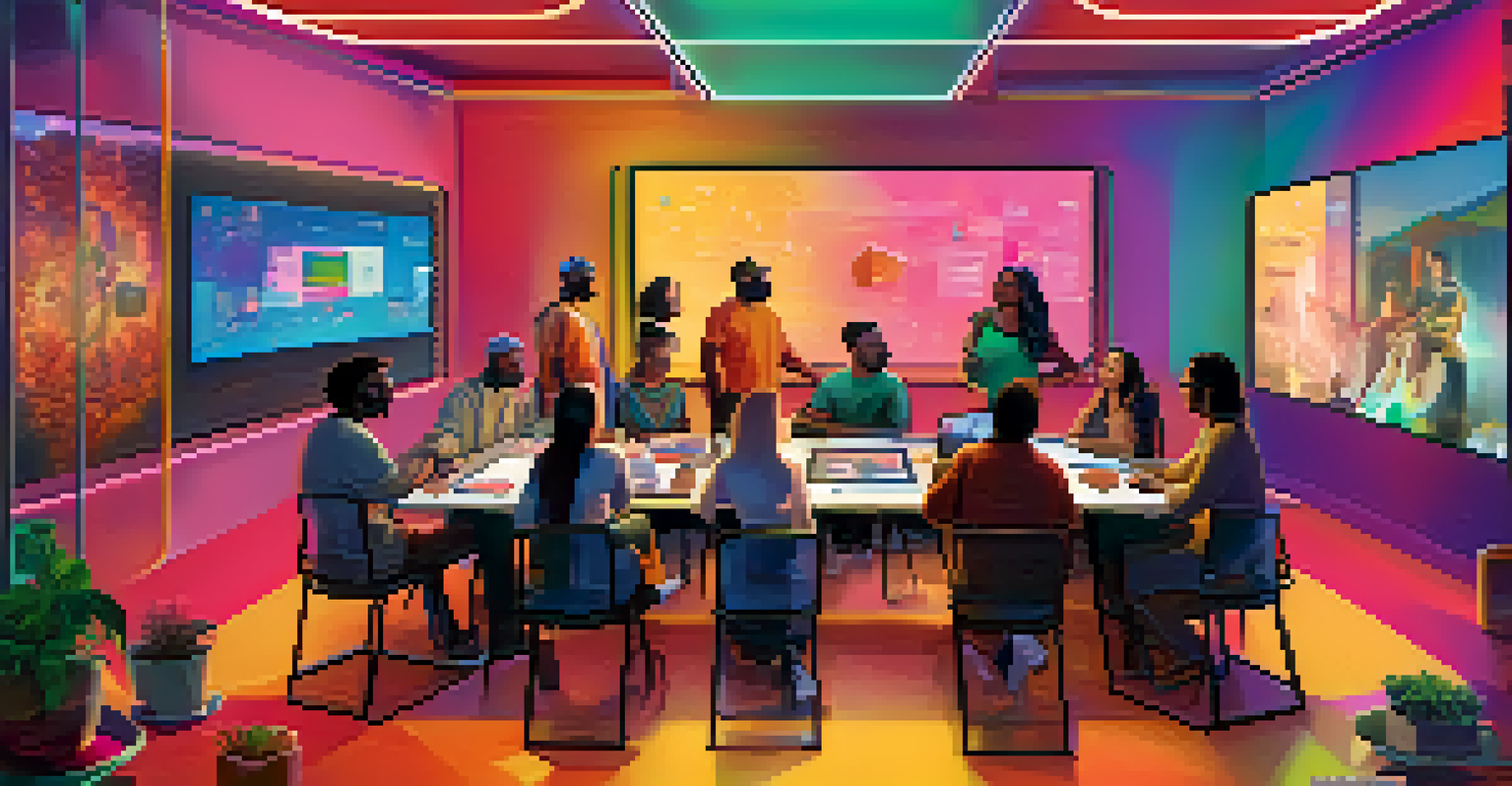The Role of NFTs in Protecting Intellectual Property Rights

Understanding NFTs and Their Functionality
NFTs, or Non-Fungible Tokens, are unique digital assets that represent ownership of a specific item or piece of content on the blockchain. Unlike cryptocurrencies, which are interchangeable, each NFT has distinct characteristics that make it one-of-a-kind. This uniqueness is what allows creators to establish provenance and authenticity for their digital works, which is crucial in protecting intellectual property rights.
NFTs are changing the way we view ownership and creativity in the digital age.
Think of NFTs like a digital certificate of authenticity for art or collectibles. Just as a physical artwork can be authenticated with a signature or a certificate, NFTs use blockchain technology to verify ownership and originality. This makes it much harder for counterfeiters to replicate or claim ownership of digital assets, providing a layer of protection that traditional methods often lack.
By leveraging the power of NFTs, artists and creators can ensure that their intellectual property is not only recognized but also protected in a digital landscape that is often chaotic. This innovative approach is changing how we view and manage ownership in the digital realm.
The Benefits of NFTs for Creators
NFTs offer significant advantages for creators looking to safeguard their intellectual property. One of the primary benefits is the ability to receive royalties on secondary sales. This means that every time an NFT is resold, the original creator can earn a percentage, creating ongoing income that traditional sales do not provide.

Moreover, NFTs empower creators by giving them more control over their work. Instead of relying on third-party platforms, artists can directly sell their creations to their audience. This direct interaction not only enhances their revenue but also fosters a stronger relationship with their fans, which can lead to increased support and loyalty.
NFTs Ensure Digital Ownership
NFTs provide a unique way for creators to verify and protect the ownership of their digital assets on the blockchain.
Additionally, the global nature of NFTs allows artists to reach a wider audience without geographical limitations. This democratization of access means that creators from diverse backgrounds can share their work and protect their rights in ways that were not possible before.
Challenges in NFT Intellectual Property Protection
While NFTs present exciting opportunities, they are not without challenges. One of the most significant issues is the lack of legal clarity surrounding NFTs and intellectual property rights. As the technology is still relatively new, laws and regulations are struggling to keep pace, leading to confusion about ownership and copyright.
The future of NFTs lies in their ability to protect the rights of creators while fostering innovation.
For example, when someone purchases an NFT, they may not fully understand what rights are transferred with that token. Does ownership of the NFT grant them the copyright to the underlying work? This ambiguity can lead to disputes and potential exploitation of creators' rights, emphasizing the need for clearer legal frameworks.
Furthermore, the environmental impact of blockchain technology raises ethical questions. The energy consumption associated with minting and trading NFTs can conflict with the values of sustainability that many creators hold dear. Addressing these challenges is essential for the long-term viability of NFTs as a tool for protecting intellectual property.
NFTs and Copyright Law: A Complex Relationship
Copyright law is designed to protect creators' rights, but its application to NFTs is complex. When a person buys an NFT, they typically purchase a token that represents an asset but may not receive the copyright to that asset unless explicitly stated. This distinction can lead to misunderstandings and potential infringement issues.
For instance, if someone creates an NFT from an existing piece of artwork without the creator's permission, they may be violating copyright laws. However, the decentralized nature of blockchain can make it challenging to track and enforce these rights. This highlights the importance of educating both creators and consumers about their rights and responsibilities in the NFT space.
Royalties Benefit Creators
NFTs allow creators to earn ongoing royalties from secondary sales, fostering financial sustainability.
Ultimately, as the NFT market evolves, so too must the legal frameworks that govern it. Collaborations between legal experts and technology developers will be crucial in shaping a system that adequately protects intellectual property while fostering innovation.
The Role of Smart Contracts in NFTs
Smart contracts play a pivotal role in ensuring that NFTs adhere to copyright regulations and protect creators' rights. These self-executing contracts are coded into the blockchain, automatically enforcing the terms agreed upon by the parties involved. This means that creators can set specific conditions for their NFTs, such as royalty percentages for resale, directly into the smart contract.
This automation reduces the risk of disputes and ensures that creators are compensated fairly each time their work is resold. It also eliminates the need for intermediaries, allowing for more direct transactions between creators and consumers. This shift not only streamlines the process but also fosters a sense of trust and transparency in the NFT market.
Moreover, smart contracts can also handle licensing agreements, enabling creators to specify how their work can be used. This level of control further enhances the protection of intellectual property rights, giving creators peace of mind as they navigate the digital landscape.
NFT Marketplaces and Intellectual Property Rights
NFT marketplaces serve as the primary platforms where creators can showcase and sell their digital assets. However, the responsibility for protecting intellectual property rights does not solely rest with the creators; marketplaces must also implement robust measures to ensure compliance with copyright laws. This includes verifying the authenticity of NFTs and monitoring for potential infringements.
Some marketplaces have begun to adopt policies that require users to confirm their ownership rights before listing an NFT for sale. This proactive approach can help mitigate the risk of copyright violations while fostering a safer environment for creators and collectors alike. However, the effectiveness of these policies often varies from one platform to another.
Legal Clarity is Needed
The current lack of clear legal frameworks surrounding NFTs creates confusion about ownership and copyright, highlighting the need for better regulations.
As the NFT landscape continues to grow, the collaboration between artists, marketplaces, and legal experts will be critical in establishing best practices that prioritize intellectual property protection. By creating a culture of respect for creators' rights, the NFT community can thrive while ensuring fair compensation for artists.
The Future of NFTs in Intellectual Property Protection
Looking ahead, the role of NFTs in protecting intellectual property rights is poised to expand. As awareness of NFTs grows, so does the understanding of their potential to safeguard creators' work. This shift could lead to more widespread adoption of NFTs across various industries, from art and music to fashion and gaming.
Moreover, advancements in technology may pave the way for more sophisticated solutions to address the challenges currently faced in the NFT space. For example, improved legal frameworks and enhanced tracking mechanisms could help streamline the enforcement of copyright laws, providing creators with the confidence they need to embrace this innovative technology.

Ultimately, the future of NFTs in intellectual property protection will depend on collaboration among creators, legal experts, and technology developers. By working together, these stakeholders can create an ecosystem that values and protects creativity while fostering innovation in the digital age.